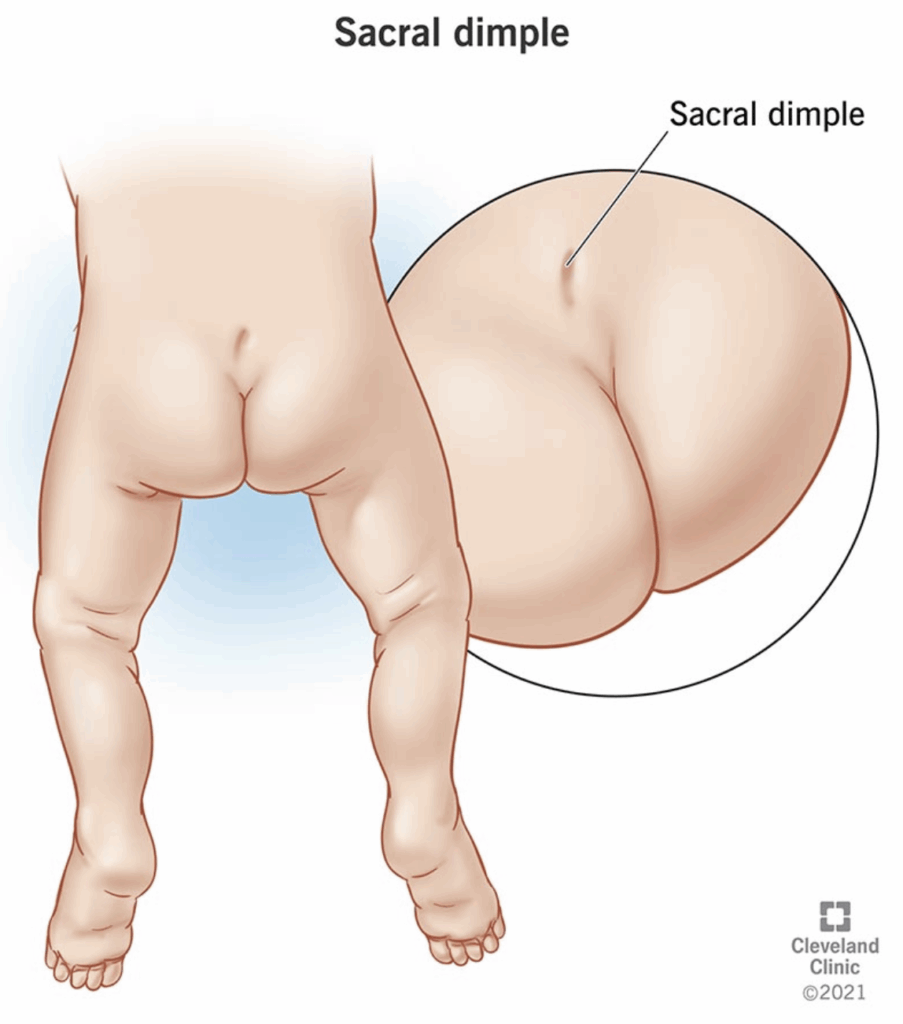Venus dimples, also known as dimples of Venus or back dimples, are small indentations found on the lower back just above the buttocks, near the waistline. These unique skin features have intrigued people for centuries and are often considered a sign of beauty and good health. What are venus dimples actually, though? Let’s look at their causes, common myths, and how they differ from other back indentations.
What Are Venus Dimples?

Venus dimples are symmetrical indentations on the lower back. They are located where the pelvis and sacrum meet, right above the buttocks. Scientifically, they mark the location where the posterior superior iliac spine is closest to the skin surface. Because of their placement, Venus dimples are only visible when a person’s lower back is exposed – in a bathing suit, for example, or when they lean forward slightly.
Causes of Venus Dimples
There are a few reasons why some people have Venus dimples and others don’t. Anatomical structure is the first reason. Venus dimples are caused by a short ligament or a natural indentation in the skin tethered to the underlying bone structure. This creates the visible indentations in the skin. Genetics are another factor – they are often linked to a dominant genetic trait passed down through families. Finally, muscle and fat distribution do play a role. Low body fat and well-defined musculature can make these dimples more prominent or visible. It is important to note that Venus dimples have no health benefits nor adverse side effects – they are simply something that some have and some don’t, and are considered purely cosmetic.
Venus Dimples vs. Sacral Dimples

It is important to distinguish Venus dimples from sacral dimples. While Venus dimples are benign and purely cosmetic, sacral dimples are typically located lower on the back, near the tailbone. They may sometimes be a sign of underlying spinal issues such as spina bifida occulta. Sacral dimples may be accompanied by skin tags or bruising. Medical imaging, such as MRI or ultrasound, may be recommended to rule out complications.
Common Myths About Venus Dimples
There are many myths about Venus dimples that are simply not true, but seem to persist. The first of these are that these dimples are a sign of better health or increased sexual pleasure. There is no scientific evidence to support a direct link between Venus dimples and sexual function or overall health. The second myth is that everyone has them. Many people do not actually have these dimples. As already explained, their presence depends on individual anatomy and genetics.
What Are Apollo Holes?

You may have also heard of something called Apollo holes. These are just what some people call venus dimples when they are present on men. They appear in the same location and are the same small indentations or dimples found on some women. People just gave them a different name for men because they wanted something that sounded more “masculine”.
The Bottom Line
Venus dimples are natural indentations on the lower back caused by anatomy and genetics. They are harmless, purely cosmetic features that have been admired in various cultures. Understanding the difference between Venus dimples and sacral dimples is important in order to distinguish harmless, cosmetic marks from potential health concerns. Both Venus dimples and Apollo holes provide a glimpse into human anatomical variations shaped by genetics and underlying bone structure.

